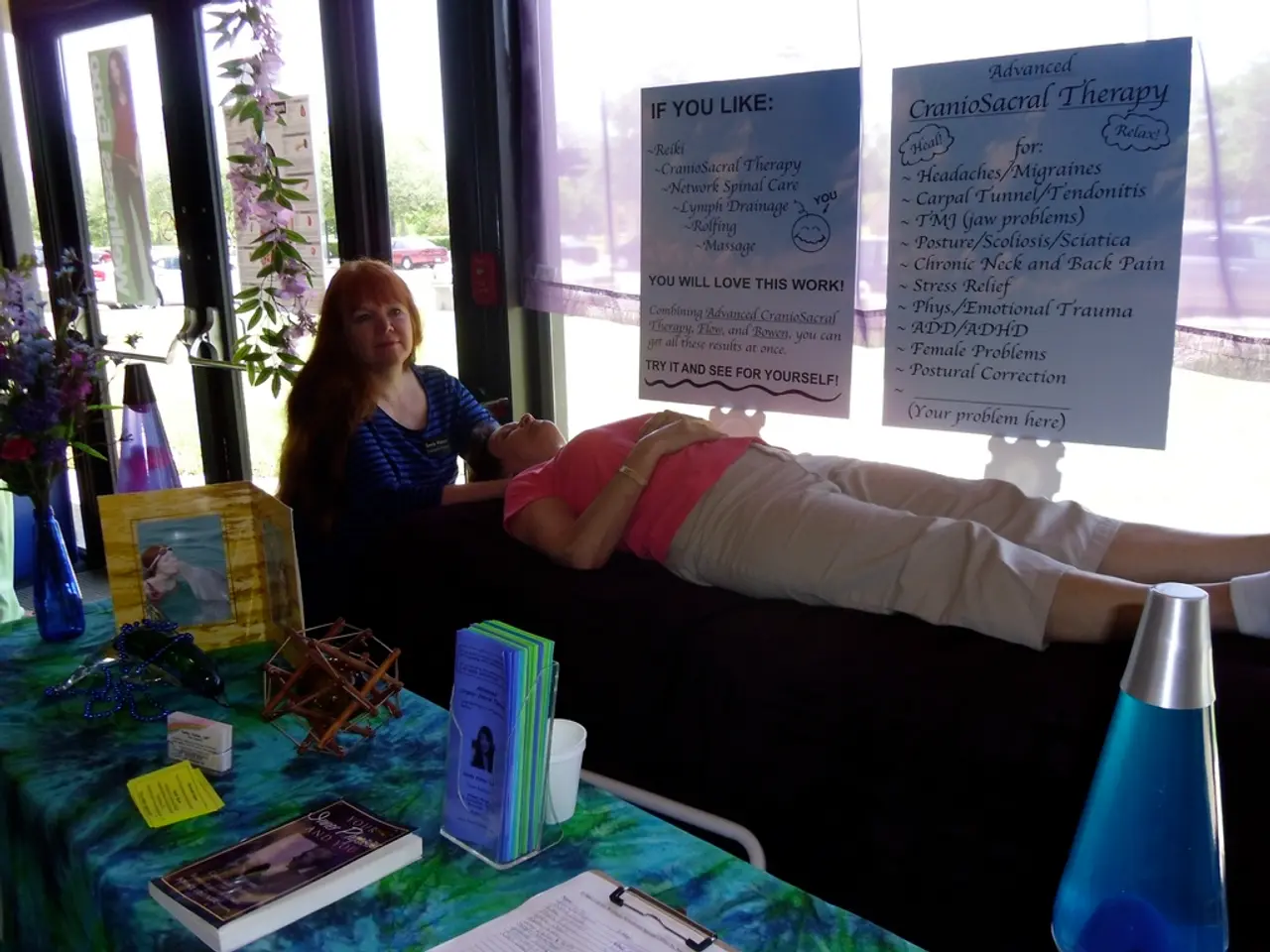Physical Exercise as a Treatment: Fitness Routines for Managing Anxiety and Depression
In the quest to maintain mental well-being, regular exercise has emerged as a crucial component. Consistency is key, and developing a regular exercise routine is essential for reaping its benefits.
Exercise should be part of a broader strategy for managing anxiety and depression. Therapy, meditation, a healthy diet, and social support are all valuable tools, but exercise plays a significant role.
Aim to incorporate movement into your daily routine, even if it's just 20-30 minutes a day. This could be a brisk walk, a bike ride, or a quick yoga session. The most effective types of exercise for managing anxiety and depression include aerobic exercises, strength/resistance training, mind-body practices, and stretching.
Aerobic exercises, such as walking, jogging, cycling, swimming, and dancing, increase heart rate and breathing, stimulating the release of endorphins (natural mood lifters) and neurotransmitters like serotonin, dopamine, and norepinephrine, all of which regulate mood and reduce anxiety and depression symptoms.
Strength/resistance training has been found effective in reducing depression, possibly by increasing self-confidence and improving brain function. Mind-body exercises like yoga and tai chi may be especially beneficial in alleviating depressive symptoms because of their focus on mindfulness and relaxation, which reduce stress and improve emotional regulation. Stretching improves blood flow, promotes relaxation, reduces muscle tension, and releases endorphins, all helping to calm anxiety.
Exercise works in several ways to support mental health. It desensitizes the body’s response to physiological arousal linked to anxiety and post-traumatic stress, gradually reducing hyperarousal. It balances cortisol and adrenaline, hormones involved in the stress response. It supports neuroplasticity, which helps the brain adapt and recover from trauma or stress. Lastly, it improves sleep quality, further reducing anxiety and depressive symptoms by allowing restorative rest and regulating circadian rhythms.
When starting an exercise routine, begin with something simple like walking or gentle yoga, and gradually increase the intensity as you feel more comfortable. Ideally, aim for 30 minutes of exercise most days of the week for mental health benefits. Remember, movement doesn't have to be intense or exhausting to be effective; find what works for you.
Walking, particularly in nature, is an effective and low-impact way to relieve stress and anxiety. Yoga and Tai Chi are excellent for calming the mind and reducing tension. The best exercise for mental health is one that individuals enjoy and will maintain regularly, as consistency is key to sustained benefits.
In summary, combining aerobic activities, strength training, and mindful exercises like yoga, along with stretching, provides a comprehensive approach to managing anxiety and depression through physiological, neurological, and psychological pathways.






